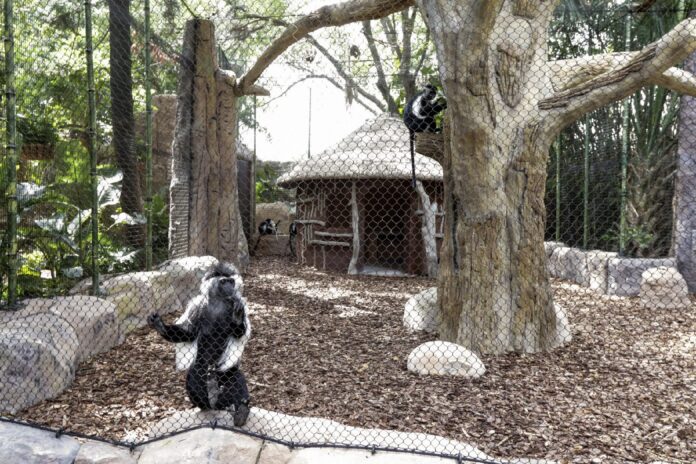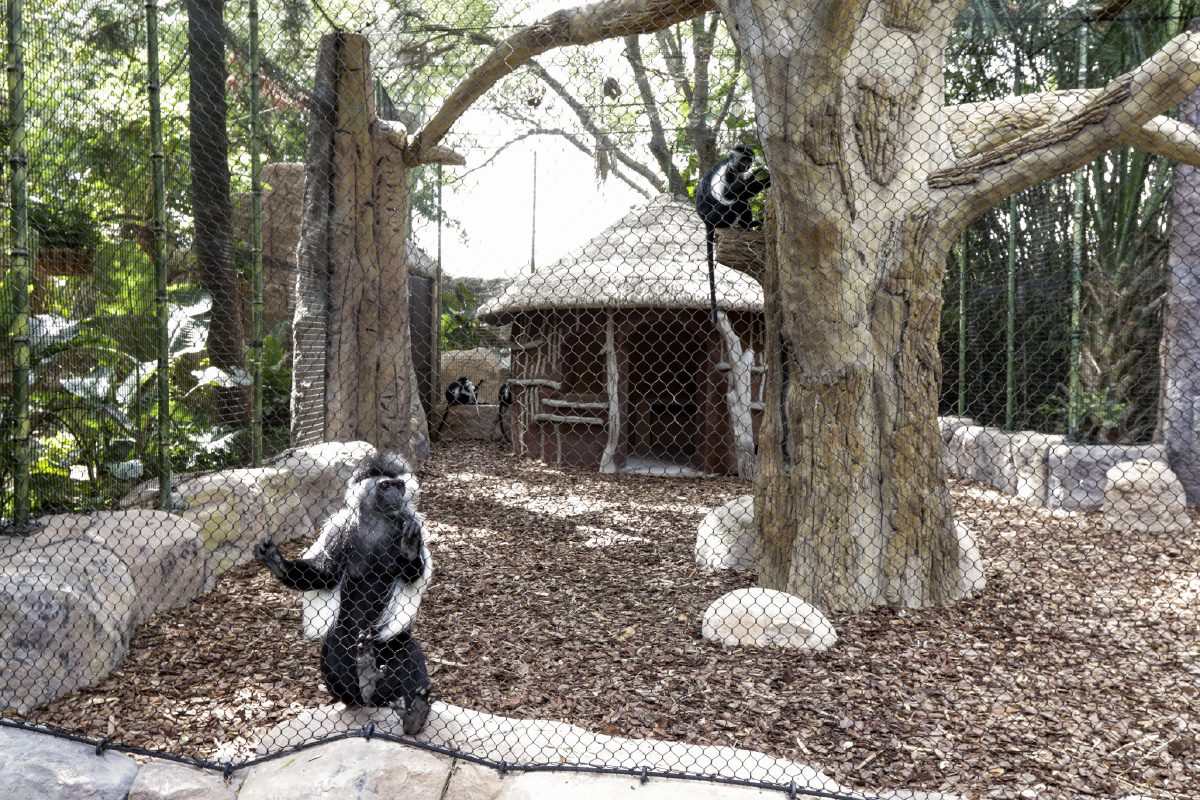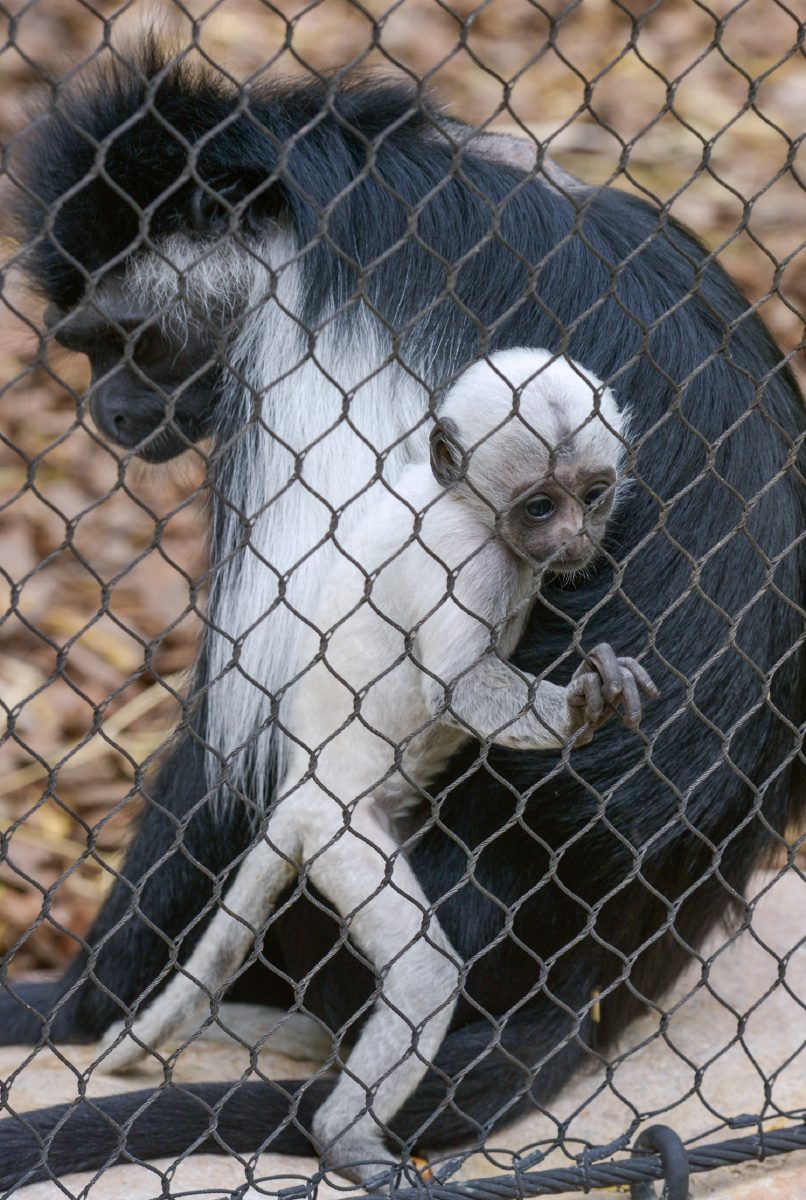BROWNSVILLE — The Angolan black-and-white colobus monkeys seem to relish their new, expanded “Colobus Crossing,” located behind Small World at the Gladys Porter Zoo, according to Mammal Curator Walter Dupree.
“It’s approximately a three-fold enlargement of their habitat,” Dupree said.
A skywalk between the older portion of the exhibit and the new Crossing allows the Eastern Angolan colobus monkeys to travel over the heads of zoo guests. Dupree says in the evening, the colobus keepers have trained all the primates to “return to the original enclosure across the skyway by ringing a doorbell.”
Inside the exhibit is a replica of an Eastern Angolan hut which is kept 15 degrees cooler so that the monkeys have the option to remain indoors or explore outside.
Zoo Director Dr. Patrick Burchfield said they wanted to devise not only a larger space for the clan, but also one that could also include a garden and some ponds.
“Now they have a beautiful area to be outside that meets the physical and behavioral needs of the troop,” Burchfield said. “We are always trying to provide the best possible habitats that will enhance the natural behaviors and ensure the well-being of the animals in our care.”
The colobus monkeys are noticeable for their fur which and have been hunted for their prized coat of black hair with long-haired white epaulettes that stream from the primates’ shoulders.
These primates are considered the most aboreal monkey species, (meaning they live in the tree canopy and rarely come down to the ground), and their diet consists mostly of leaves, but at the zoo, also includes fruits and flowers.
As the colobus evolved over time, their thumbs disappeared, (an oddity among primates), and having just four fingers allows the monkeys to shape their fingers like a “swinging hook”, and propels their lightweight, elongated limbs from branch to branch. They are great leapers, able to cover distances as long as 20 feet at a time.
The species is native to northern Angola, and their slim bodies and long tails help them balance as they move through the treetops.
The expanding colobus troop at the Gladys Porter Zoo is part of the Species Survival Plan (SSP) for the species who needed the additional space to roam, jump and play.
The youngest colobus at the Gladys Porter Zoo is the male infant named Dakari, which means joy, and he will retain the strikingly-white coat until he turns three months old when his fur will turn grey, then, when he reaches adulthood, his coat will become black and white.
The other colobus “toddlers” include the female, Makalo, which means wonder, and a male, Jabari, which means courageous.
At Gladys Porter Zoo, the colobus clan consists of the dominant adult male, Asante, and he will mate with all the females, who consist of the dominant Kamili, (“beautiful young woman”), as well as the other females, Zainoi, Naazi, and Jinsi.
Dupree says that each of the colobus have been implanted with a transponder so that their keepers can not only tell the monkeys apart, but keep track of their health.
Colobine infants are cared for by all the females in the troop, whose “aunting behavior” is encouraged by the infants’ white-to-gray coloration.
Females remain in their natal troops for life, approximately 18 years. The dominant male defends the territory and troop from predators in the wild, whereas the dominant female leads the troop. The young males at the Gladys Porter Zoo, Jabari and the youngest Dakari, will eventually be separated from their natal troop, when they reach the age of approximately 2, and sent to other zoo facilities to start bachelor troops or take over their own troop.
For more information on the colobus monkeys, including animal feedings’ times, visit: visit the Gladys Porter Zoo’s website, www.gpz.org.







